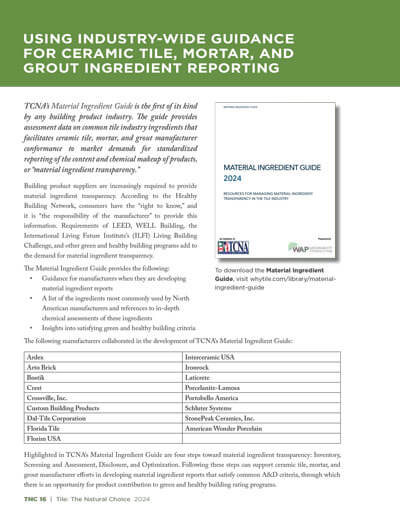Notable Tile Installation

Notable Tile Installation
Name:
New York’s Old City Hall Subway Station
Location:
New York City, New York
Year of Installation:
1904
Photo: Wikipedia Commons
Craftmanship Features
On each side of the street in front of New York’s City Hall, a staircase leads to an abandoned subway station like no other.
These stairways lead down to a mezzanine area, where fares were once collected at an ornate oak ticket booth. The mezzanine features one of various self-supporting vaulted tile ceilings designed by master artisan Rafael Guastavino for the station, as well as a leaded glass skylight. What we would now consider white subway tile lines the walls, crowned by green tile arches and red Roman brick laid in a herringbone pattern surrounding the skylight. The white, green, and red colors contrast with the blue glass in the skylight to a stunning effect.
A wide tiled arched opening leads from the mezzanine down to the center of the station’s platform. Along the platform, which is notable for its curved shape, 15 tiled arches support the ceiling and showcase the same colors as the mezzanine above. Three additional glass skylights once filtered sunshine onto parts of the platform, but were later blackened during World War II as a safety measure. The platform’s other light source — 12 elegant brass chandeliers — are still functioning, however.
Several “City Hall” nameplates made of mosaic tiles appear throughout the station, and a plaque commemorates the opening of New York’s first subway station and praises everyone involved in the work.
The station is known for the way that its graceful curves, seen in both its tiled arches and vaulted tile ceilings, harmonize with the curved structure of the platform itself.
History
The City Beautiful architectural movement, which posited that beautiful architecture could help improve civic society, was well underway when New York City’s first subway stations were being planned in 1904. City Hall Station, the ceremonial terminal and the first station to open, would reflect these values and allow the mayor to show off the finished project.
As such, designers George Lewis Heins and Christopher Grant LaFarge were hired as consulting architects in addition to Rafael Guastavino, the principal designer. Both Heins and LaFarge were part of the Arts and Crafts movement, which emphasized personal attention to quality.
Heins and LeFarge were concerned about more than style, though. They chose to use ceramic tile in their designs in part because of its durability and easy cleaning. Hygiene was a major concern during the Victorian era and would be especially important to make passengers feel safe and comfortable underground — something that the white tiles’ glazed surface, which reflected light, was also intended to help with.
Construction of City Hall Station began on March 24, 1900 and was completed by its grand opening on October 27, 1904. This was a heavily attended event, with passengers ringing bells and blowing whistles to celebrate.
Despite this fanfare and the station’s impressive design, City Hall Station was never an important station while in use and ended up closing in 1945.
The station’s full importance is well appreciated today, however: City Hall Station was designated an interior landmark in 1979 and listed on the National Register of Historic Places in 2004. It is considered one of the most beautiful subway stations in the world and the namesake of modern subway tile.
After debuting in City Hall Station, the newfound “subway tile” went on to appear in other underground transportation hubs around the world and, eventually, homes and businesses. Subway tile’s health benefits and bright and clean appearance has made it especially popular for use anywhere hygiene is important, such as kitchens and bathrooms.
See for Yourself
Even though trains no longer stop at City Hall Station, you can still check it and its impressive tilework out by booking a guided tour with the New York Transit Museum. New Yorkers are also known to covertly remain on the 6 train after its last stop to catch a glimpse — but you didn’t hear it from us!
Extra Resources

Download #OutsideTheBox: Your Tile Buying Guide…and get started now!



